U.S. REITs continuously look for ways to increase liquidity, and with the economy in a state of turmoil, many REITs have scrutinized their dividend policies in an attempt to increase earnings as well as cash.
On Dec. 10, 2008, the IRS  ruled that publicly traded REITs can satisfy the tax requirement that they distribute at least 90% of their taxable income to shareholders by paying the majority of their dividends in the form of stock. The
ruled that publicly traded REITs can satisfy the tax requirement that they distribute at least 90% of their taxable income to shareholders by paying the majority of their dividends in the form of stock. The  ruling permits the amount of cash to be capped at 10% of the total dividend. To date, only a few companies, including Vornado Realty Trust and Simon Property Group Inc., have chosen to exercise this option.
ruling permits the amount of cash to be capped at 10% of the total dividend. To date, only a few companies, including Vornado Realty Trust and Simon Property Group Inc., have chosen to exercise this option.
In the latter part of 2008, a number of companies chose to cut or suspend their dividends. In 2005, 13 U.S. REITs cut their dividends; in 2008, that number was 43, including the 11 companies that suspended their dividends. DuPont Fabros Technology Inc., which IPO'd in October 2007, also suspended its dividend in 2008 but was not counted in the decreases because it did not pay regular dividends in 2007.
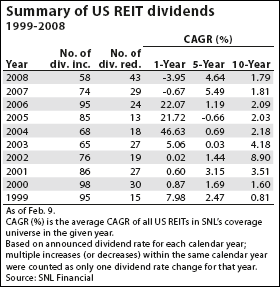
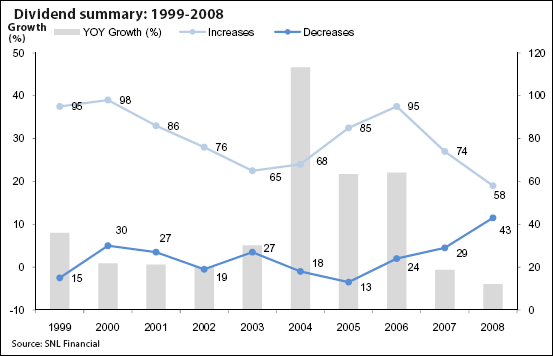
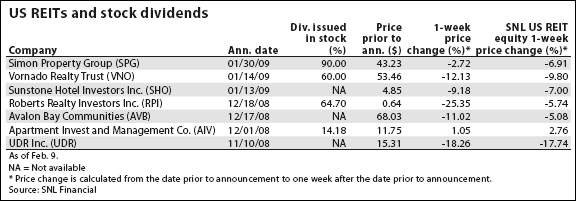
The majority of U.S. REITs declared changes — especially decreases — in their dividend amounts in the 2008 fourth quarter. There were 28 decreases in dividends in the fourth quarter of 2008 compared to four in the fourth quarter of 2007 and seven in the 2006 period. In the fourth quarter of 2008, when the MSCI US REIT Index (RMS) decreased 39%, 11 REITs increased their dividends. The fourth-quarter increases were not nearly as strong as in prior years: REITs declared 36 increases in the fourth quarter of 2007 and 41 increases in the fourth quarter of 2006.
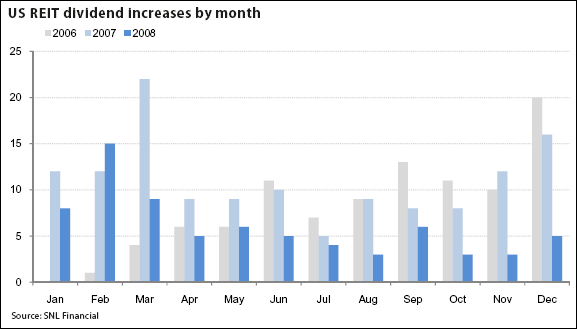
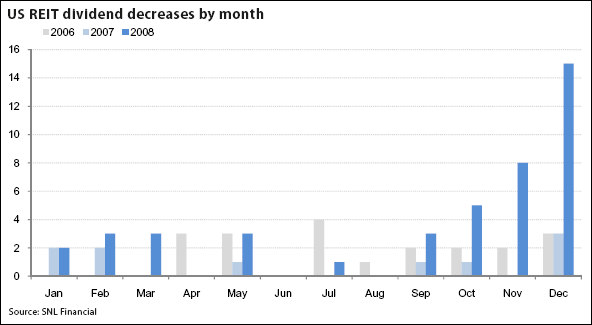
The annual number of dividend increases ranged from 58 to 98 between 1999 and 2008, with the lowest number of increases being recorded in 2008. The U.S. REIT industry's average 10-year CAGR has yet to decline over the 10-year period, and the industry has only seen one average five-year CAGR decline in 2005 of 0.66%. In addition, the industry has only seen a year-over-year average decline in 2007 of 0.67% and in 2008 of 3.95%.
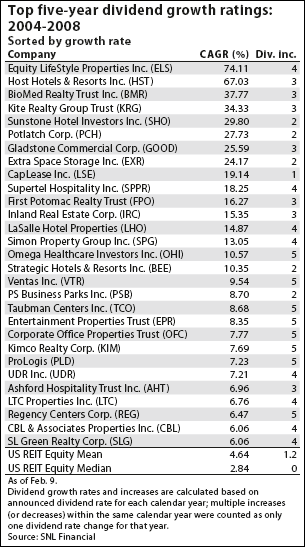
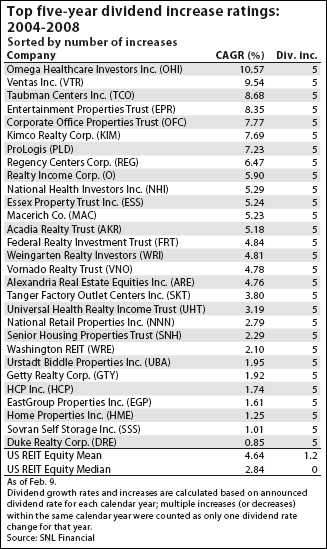
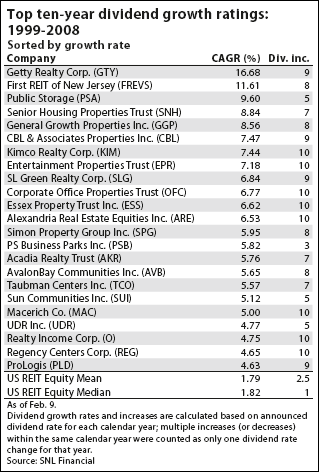
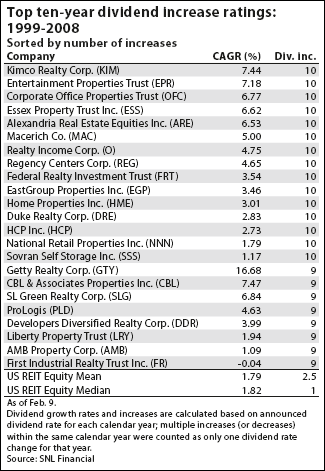
With REIT investors increasingly concerned with dividend payouts partially in stock, we take a look at the top 25 U.S. REITs based on 10-year total returns and the median dividend yield of each company across that time period. Surprisingly, 15 of the top 25 REITs had a dividend yield from 1999 to 2008 that was smaller than the median of 6.37% for all equity REITs over that same time period. This leads us to wonder if dividends are only part of the equation and if a prudent REIT investor looking for long-term gains on equity will respect a REIT's decision to possibly pay a smaller dividend yield than the industry median to maintain a strong balance sheet and the continued ability to meet current and future debt obligations.
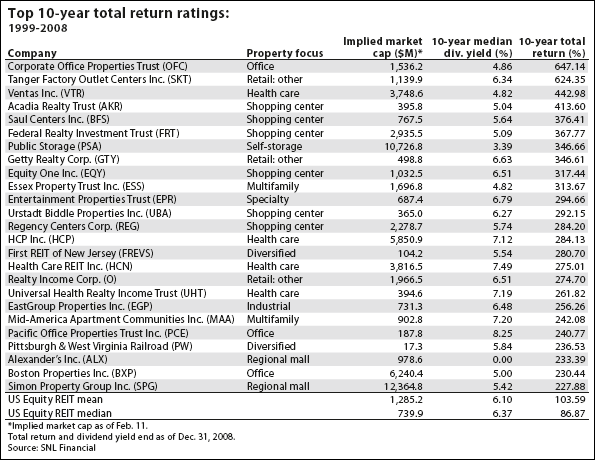
To see the data presented below in Microsoft Excel format, please click here.
To see further details on dividends, please refer to SNL's REIT Dividends Template.

